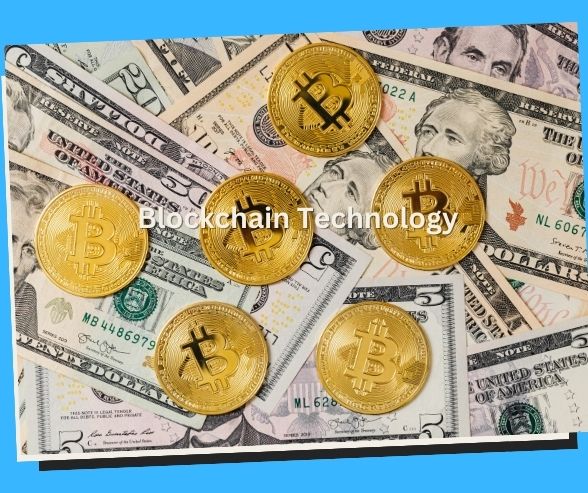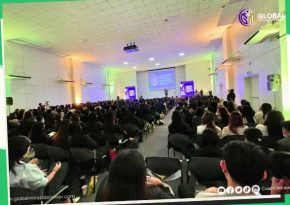
Master Ethereum Token Creation: A Step-by-Step Guide to ERC-20 Tokens
Ready to tokenize your ideas? Learn how to create ERC-20 tokens on Ethereum and take your projects to the next level!
Crafting Your Digital Currency: A Beginner’s Guide to Creating an ERC-20 Token on Ethereum 🪙
Welcome, aspiring crypto creator! Are you ready to embark on a journey of tokenization and decentralized finance (DeFi)? If you’ve ever dreamt of creating your digital currency on the Ethereum blockchain, now is the time to turn your vision into reality. In this comprehensive guide, we’ll demystify the process of creating an ERC-20 token, empowering you to join the ranks of token pioneers and shape the future of decentralized finance. So, let’s dive into the fascinating world of ERC-20 token creation and unleash your digital currency dreams!
Understanding ERC-20 Tokens: The Backbone of Tokenized Economy
Before we delve into the nitty-gritty of ERC-20 token creation, let’s ensure we’re all on the same decentralized wavelength. ERC-20 tokens are fungible tokens built on the Ethereum blockchain according to the ERC-20 token standard. These tokens adhere to a set of predefined rules and interfaces, making them interoperable with various Ethereum-based applications, wallets, and exchanges.
ERC-20 tokens serve as the building blocks of the tokenized economy, enabling a wide range of use cases, including crowdfunding, tokenized assets, decentralized finance (DeFi) protocols, and digital collectibles. By creating an ERC-20 token, you unlock opportunities to engage with the vibrant ecosystem of decentralized finance and shape the future of digital finance.
Prerequisites: Equipping Yourself for Token Creation Adventure
Before you embark on your ERC-20 token creation journey, make sure you have the following essentials at your disposal:
- Basic Understanding of Ethereum Blockchain: Familiarize yourself with the fundamentals of the Ethereum blockchain, including smart contracts, gas fees, and transaction processing.
- Proficiency in Solidity Programming: Solidity is the primary programming language used for writing smart contracts on the Ethereum blockchain. Ensure you have a basic understanding of Solidity syntax, data types, and smart contract development principles.
- Development Environment Setup: Set up a development environment tailored for Ethereum smart contract development, including tools such as Remix, Truffle, and Ganache for smart contract compilation, testing, and deployment.
- Ethereum Wallet: Obtain an Ethereum wallet to interact with the Ethereum blockchain and deploy your ERC-20 token smart contract. MetaMask is a popular choice among Ethereum developers for its ease of use and compatibility with various browsers.
- Patience and Persistence: Token creation requires attention to detail and thorough testing to ensure the security and functionality of your ERC-20 token smart contract. Approach the process with patience and persistence, knowing that each step brings you closer to your goal.
Step-by-Step Token Creation Guide: Building Your Digital Currency Empire
Now that you’re equipped with the essentials, let’s embark on the exhilarating journey of ERC-20 token creation. Follow these step-by-step instructions to bring your digital currency to life on the Ethereum blockchain:
- Design Your Token Smart Contract 🛠️:
- Write a Solidity smart contract to define the logic and functionality of your ERC-20 token.
- Define essential parameters such as token name, symbol, decimal places, total supply, and initial distribution.
- Implement Token Functions 🔄:
- Implement standard ERC-20 token functions within your smart contract, including
balanceOf,transfer,approve,transferFrom, andallowance. - Customize token functionalities to suit your specific use case, such as adding minting, burning, or pausing mechanisms.
- Test Your Token Smart Contract 🧪:
- Conduct thorough testing of your ERC-20 token smart contract to ensure its functionality, security, and compliance with ERC-20 standards.
- Use tools like Remix IDE or Truffle’s testing framework to automate testing and identify any potential bugs or vulnerabilities.
- Compile and Deploy Your Smart Contract 🚀:
- Compile your ERC-20 token smart contract using the Solidity compiler to generate bytecode and ABI (Application Binary Interface).
- Deploy your smart contract to the Ethereum blockchain using a deployment tool or Ethereum development framework like Truffle or Remix.
- Verify and Interact with Your Token Contract 🔍:
- Verify your deployed ERC-20 token smart contract on Ethereum blockchain explorers like Etherscan to provide transparency and credibility to token holders.
- Interact with your token contract using Ethereum wallets or decentralized applications (DApps) to test token transfers, approvals, and other functionalities.
Tips and Best Practices: Navigating the Token Creation Journey
As you embark on your ERC-20 token creation journey, keep these tips in mind to navigate the process effectively and maximize your token’s potential:
- Follow ERC-20 Standards: Adhere to the ERC-20 token standard to ensure compatibility with existing Ethereum wallets, exchanges, and DeFi protocols.
- Implement Security Measures: Implement robust security measures in your token smart contract to mitigate potential vulnerabilities and protect token holders’ funds from exploits or attacks.
- Document Your Smart Contract: Document your ERC-20 token smart contract thoroughly, including function descriptions, event logs, and usage examples, to facilitate understanding and future development.
- Engage with the Community: Join Ethereum developer communities, forums, and social media channels to seek feedback, share insights, and collaborate with fellow token creators and developers.
- Stay Informed: Keep abreast of the latest developments in the Ethereum ecosystem, including protocol upgrades, gas fee changes, and best practices for smart contract development, to ensure your token remains relevant and compliant.
Empowering Decentralized Finance, One Token at a Time
As you reach the culmination of your ERC-20 token creation journey, take pride in the digital currency empire you’ve built from scratch. By harnessing the power of Ethereum’s blockchain, you’ve unlocked a world of financial innovation and decentralized possibilities, empowering individuals to transact, interact, and collaborate in a trustless and transparent environment.
So, let your creativity soar, your ambition drives you, and your passion fuels your journey through the tokenized frontier. With each line of code you write, and each function you implement, you contribute to the ongoing evolution of decentralized finance and shape the future of digital currencies.
Fair winds and happy coding, brave crypto creator! May your ERC-20 token thrive, your community flourish, and your decentralized dreams inspire generations to come. Onward, to the tokenized future! 🌟🚀
Understanding ERC-20 Tokens
Before we dive into the details, let’s understand what ERC-20 tokens are and why they’re essential:
- What are ERC-20 Tokens?: ERC-20 tokens are fungible tokens built on the Ethereum blockchain that follow a set of standardized rules, allowing for seamless interoperability and compatibility with various wallets and exchanges.
- Why Create ERC-20 Tokens?: ERC-20 tokens enable the creation of digital assets, representing anything from cryptocurrencies to loyalty points, securities, and even art.
Benefits of Creating ERC-20 Tokens
Creating ERC-20 tokens offers numerous benefits, including:
- Accessibility: Anyone can create and distribute ERC-20 tokens, democratizing access to tokenization.
- Interoperability: ERC-20 tokens can be easily integrated into existing Ethereum-based platforms, wallets, and exchanges.
- Customization: Tailor your ERC-20 token to fit your specific use case, whether it’s a utility token for a decentralized application or a security token representing ownership in an asset.
- Fractional Ownership: Tokenization allows for fractional ownership of assets, making them more accessible to a wider audience.
- Liquidity: ERC-20 tokens can be traded on decentralized exchanges (DEXs) and traditional cryptocurrency exchanges, providing liquidity to token holders.
- Transparency: Transactions involving ERC-20 tokens are recorded on the immutable Ethereum blockchain, providing transparency and auditability.
- Cost-Effectiveness: Creating ERC-20 tokens is relatively inexpensive compared to traditional methods of asset issuance.
- Global Reach: ERC-20 tokens can be transferred and traded globally, enabling borderless transactions and investments.
- Automation: Smart contracts can automate various processes related to ERC-20 tokens, such as distribution, dividends, and governance.
- Innovation: Tokenization opens up new avenues for innovation, revolutionizing industries ranging from finance and real estate to gaming and art.
Case Studies: Real-Life Examples of ERC-20 Tokens
Let’s explore how individuals and organizations are leveraging ERC-20 tokens for various purposes:
- Stablecoin: Tether (USDT) is a popular ERC-20 stablecoin pegged to the value of the US dollar, providing stability and liquidity to cryptocurrency markets.
- Utility Token: Binance Coin (BNB) is an ERC-20 token used on the Binance exchange for trading fee discounts and participation in token sales on the Binance Launchpad.
- Security Token: Harbor (RHT) is an ERC-20 token representing ownership in real-world assets, such as commercial real estate properties, compliant with securities regulations.
- Governance Token: MakerDAO (MKR) is a governance token used in the MakerDAO protocol to vote on proposals and manage the stablecoin Dai (DAI).
- Non-Fungible Token (NFT): CryptoKitties (CK) are ERC-721 tokens representing unique digital collectibles, each with its own traits and attributes.
- Loyalty Points: Starbucks could create ERC-20 tokens as digital loyalty points, allowing customers to earn and redeem rewards seamlessly.
- Tokenized Artwork: An artist could tokenize their artwork as ERC-20 tokens, allowing collectors to purchase and trade fractional ownership in the piece.
- Gaming Token: Axie Infinity (AXS) is an ERC-20 token used in the Axie Infinity game for purchasing in-game assets and participating in gameplay.
- Supply Chain Token: A logistics company could create ERC-20 tokens to track and manage goods throughout the supply chain, improving transparency and efficiency.
- Tokenized Securities: A real estate firm could tokenize ownership in properties as ERC-20 tokens, enabling fractional ownership and liquidity in the real estate market.
Key Takeaways
As you embark on your journey to create an ERC-20 token, keep these key takeaways in mind:
- Understand Token Standards: Familiarize yourself with ERC-20 and other token standards to ensure compatibility and interoperability.
- Define Your Use Case: Clearly define the purpose and utility of your token to guide its design and implementation.
- Choose a Token Name and Symbol: Select a unique and memorable name and symbol for your token that reflects its purpose and identity.
- Determine Token Supply: Decide on the total supply and distribution mechanism for your token, considering factors such as inflation, deflation, and tokenomics.
- Write Smart Contracts: Develop and deploy smart contracts that implement the functionality and logic of your ERC-20 token, including transfer, balance, and allowance functions.
- Test Thoroughly: Conduct comprehensive testing of your smart contracts to identify and address any potential vulnerabilities or bugs.
- Deploy on Ethereum: Deploy your ERC-20 token smart contracts to the Ethereum blockchain, ensuring proper verification and gas fee management.
- Integrate with Wallets and Exchanges: Work with wallet providers and exchanges to integrate support for your ERC-20 token, making it accessible to users and traders.
- Comply with Regulations: Consider legal and regulatory requirements when creating and distributing your ERC-20 token, especially if it represents ownership in real-world assets or securities.
- Engage with the Community: Engage with the Ethereum and blockchain community to promote awareness of your token and attract users and investors.
Frequently Asked Questions (FAQ)
Here are answers to common questions about creating ERC-20 tokens:
Q1: Do I need programming skills to create an ERC-20 token?
A1: While programming skills are beneficial for developing smart contracts, there are tools and templates available to simplify the process for non-programmers.
Q2: How much does it cost to create an ERC-20 token?
A2: The cost of creating an ERC-20 token varies depending on factors such as development complexity, gas fees, and legal compliance expenses.
Q3: Can I change the supply of my ERC-20 token after deployment?
A3: No, the total supply of an ERC-20 token is fixed upon deployment, and it cannot be changed without deploying a new token contract.
Q4: How do I distribute my ERC-20 token to investors?
A4: You can distribute your ERC-20 token through airdrops, token sales, or direct transfers to investors’ Ethereum addresses.
Q5: What is the difference between ERC-20 and ERC-721 tokens?
A5: ERC-20 tokens are fungible and represent identical units of value, while ERC-721 tokens are non-fungible and represent unique, indivisible assets.
Q6: Can I mint additional tokens after deployment?
A6: Depending on the functionality of your smart contracts, you may be able to mint additional tokens under certain conditions, such as through a minting function controlled by a designated address.
Q7: How do I ensure the security of my ERC-20 token?
A7: Implement best practices for smart contract security, such as code reviews, testing, and audits by reputable firms specializing in blockchain security.
Q8: Can I tokenize real-world assets as ERC-20 tokens?
A8: Yes, you can tokenize real-world assets such as real estate, stocks, and commodities as ERC-20 tokens, representing ownership or fractional ownership in the assets.
Q9: Do I need to comply with Know Your Customer (KYC) and Anti-Money Laundering (AML) regulations when distributing my ERC-20 token?
A9: Depending on the jurisdiction and nature of your token distribution, you may need to comply with KYC and AML regulations to prevent illicit activities and ensure regulatory compliance.
Q10: Can I create a burn function to destroy tokens?
A10: Yes, you can implement a burn function in your smart contracts to permanently remove tokens from circulation, reducing the total supply.
Conclusion
By following this guide and leveraging the insights provided, you’re well-equipped to embark on your journey to create an ERC-20 token on the Ethereum blockchain. Whether you’re tokenizing assets, launching a new cryptocurrency, or exploring innovative use cases, ERC-20 tokens offer a powerful tool for building decentralized ecosystems and unlocking new opportunities in the digital economy! 🌐✨
Key Phrases
- ERC-20 token creation on Ethereum
- How to create ERC-20 tokens
- Ethereum tokenization guide
- Building ERC-20 tokens on Ethereum
- ERC-20 token development tutorial
- Ethereum token creation process
- Creating custom tokens on Ethereum
- ERC-20 token standard tutorial
- Beginner’s guide to ERC-20 tokenization
- Ethereum cryptocurrency creation
Best Hashtags
- #ERC20
- #EthereumToken
- #TokenCreation
- #CryptoDevelopment
- #Blockchain
- #Cryptocurrency
- #SmartContracts
- #DigitalAssets
- #EthereumTutorial
- #Tokenization
Save/Share this story with QR CODE
Disclaimer
This article is for informational purposes only and does not constitute endorsement of any specific technologies or methodologies and financial advice or endorsement of any specific products or services.
📩 Need to get in touch?
Feel free to Email Us for comments, suggestions, reviews, or anything else.
We appreciate your reading. 😊Simple Ways To Say Thanks & Support Us:
1.) ❤️GIVE A TIP. Send a small donation thru Paypal😊❤️
Your DONATION will be used to fund and maintain NEXTGENDAY.com
Subscribers in the Philippines can make donations to mobile number 0917 906 3081, thru GCash.
3.) 🛒 BUY or SIGN UP to our AFFILIATE PARTNERS.
4.) 👍 Give this news article a THUMBS UP, and Leave a Comment (at Least Five Words).
AFFILIATE PARTNERS

World Class Nutritional Supplements - Buy Highest Quality Products, Purest Most Healthy Ingredients, Direct to your Door! Up to 90% OFF.
Join LiveGood Today - A company created to satisfy the world's most demanding leaders and entrepreneurs, with the best compensation plan today.



 Business Technology, Finance Technology & Information Technology
Business Technology, Finance Technology & Information Technology





